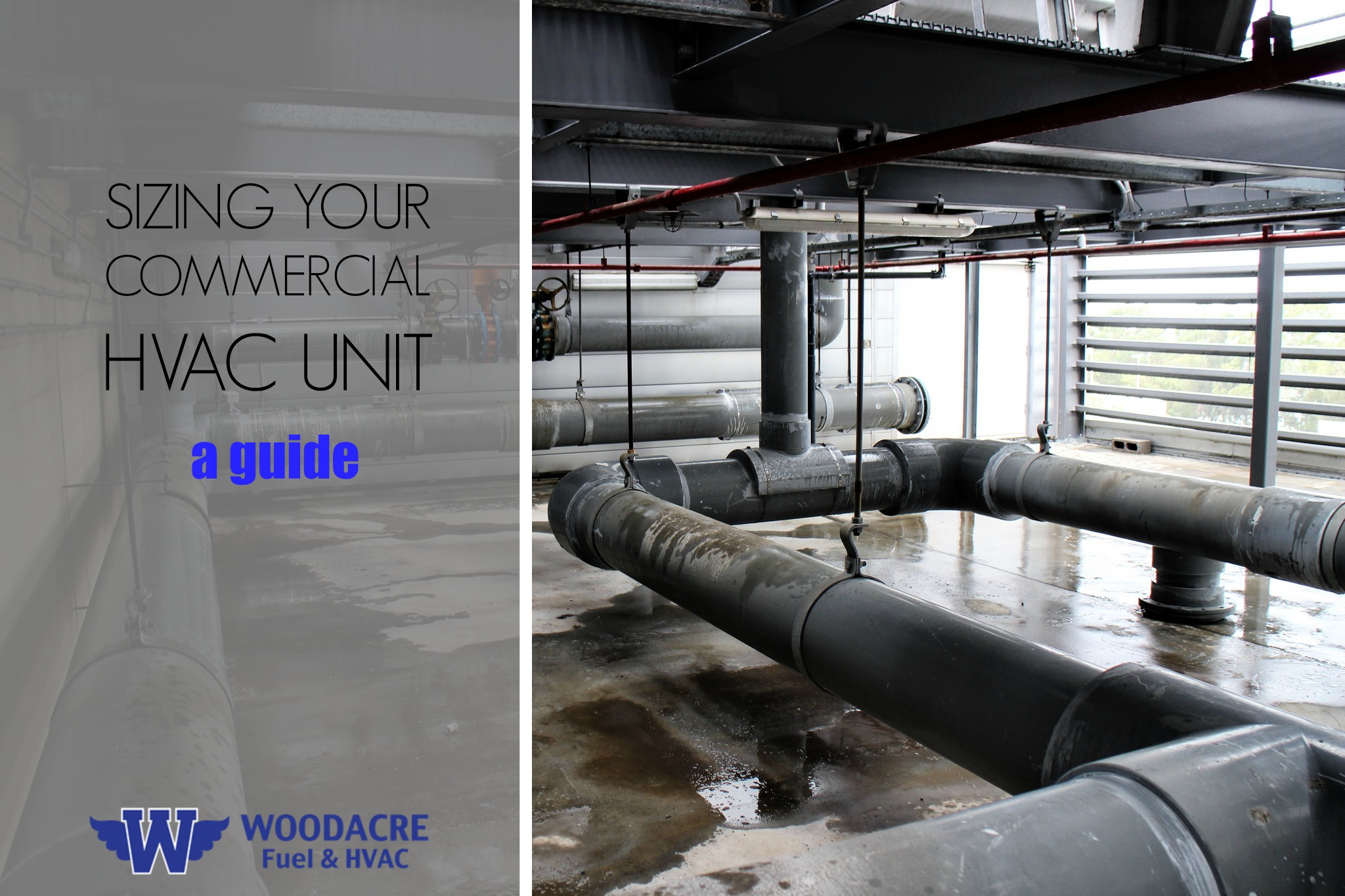Commercial HVAC systems have to be sized appropriately to ensure a comfortable environment. An HVAC unit that is too small can make it difficult to achieve optimal comfort levels within the building, and this also causes your HVAC unit to work harder than it should. Whereas a unit that is too large can cause your system to turn on and off many times throughout the course of the day as it achieves optimal temperature rather quickly. In both of these situations, you can cause unnecessary wear and tear to your HVAC system’s parts and waste energy, which impacts your electricity bills.
Installing an appropriately sized HVAC unit is the key to achieving comfortable temperatures in the building while keeping your HVAC system running smoothly and working efficiently. Our simple guide to sizing your commercial HVAC system will give you a little more information on the factors you should consider when choosing a new HVAC System.
Guide to Sizing Your Commercial HVAC System
If the size of a single unit is above 5 tons, then it can be classified under commercial HVAC unit. Commercial HVAC units are bigger in size and can have higher efficiency. There are different types of commercial units available such as variable refrigerant flow systems, packaged rooftop systems, central systems with air handlers etc. Proper zoning and zoning controls are required which would help in the correct sizing of the system.
How to Size Commercial HVAC System
Commercial HVAC system sizing depends basically on the loads generated in the building. The loads can be broadly divided into external loads and internal loads. External loads are from the weather conditions. The building is exposed to outside conditions which bring heat directly into the interiors. Internal loads are made up of heat from lighting, people, equipment, fresh air and infiltration loads. Both the internal and external loads should be accounted for while sizing the HVAC system.
There are many calculators and types of software available in the market to size air conditioners. These will incorporate all the heat loads and can give precise values. There are many basic rules and generic calculations also available. These calculations can very well estimate the heat loads and help you arrive at an accurate number.
Calculating Heat Loads
While doing the heat load calculations, you might want to keep the following references handy:
1) Manual J/ Manual N
2) Psychometric chart
3) Duct sizing chart
4) Comfort chart from ASHRAE
Here is the procedure for calculating heat loads:
1) Use the psychometric chart to check the comfort conditions
2) Use Manual J/Manual N to calculate the heat gains in all zones
3) Calculate the amount of supply air into the room which includes fresh air and recirculated air which will give you the cooling load value. The data required to arrive is air flow of 5 liters/person, indoor and outdoor design air conditions and room slope values.
4) Finally calculate the duct sizing using duct charts, resistance values and maximum air draft at the design conditions.
These are the most comprehensive steps to get accurate system sizing for your commercial building. However, it may be easier to work with an experienced HVAC technician to determine the adequate size for your commercial HVAC system. Not only does this save you time, but it can also help you reduce any errors in calculation.
Accurate sizing can help in selecting the right systems, provide comfort conditions and bring down the utility bills. Looking at the benefits of system sizing, it is always good to put in extra effort than being sorry later. If you need help finding the right size commercial HVAC system for you, give us a call today.

